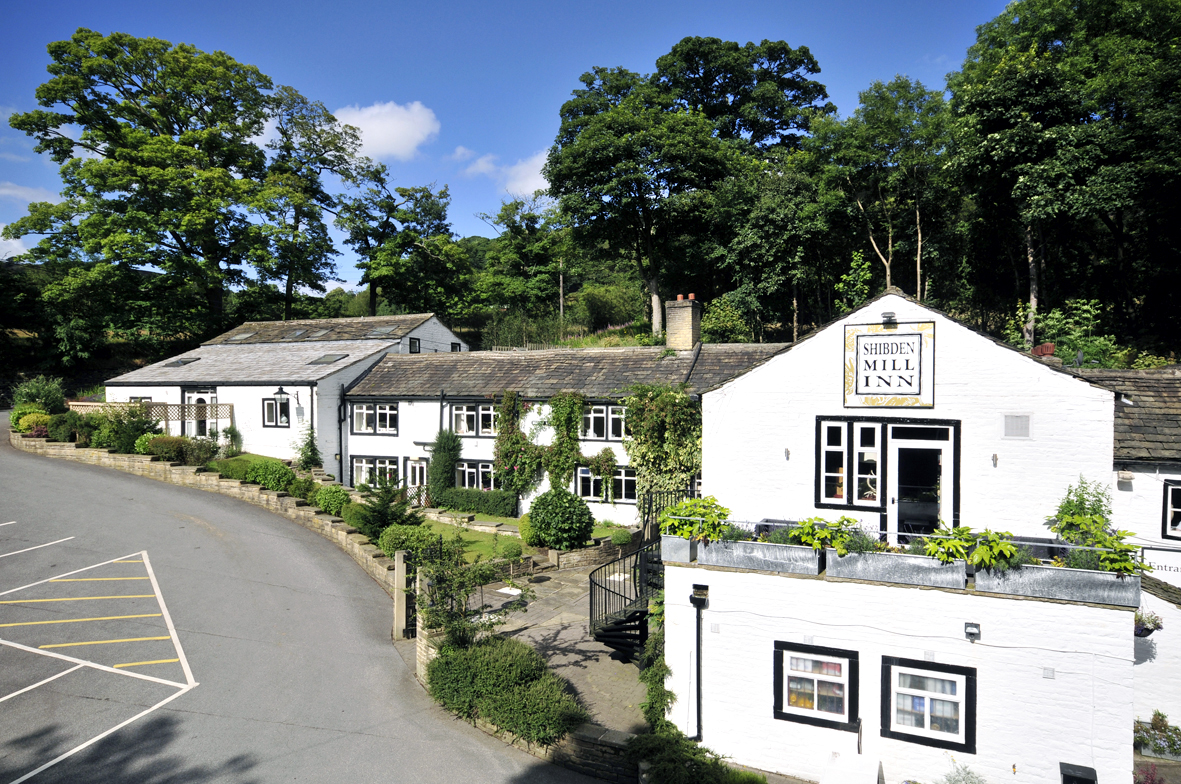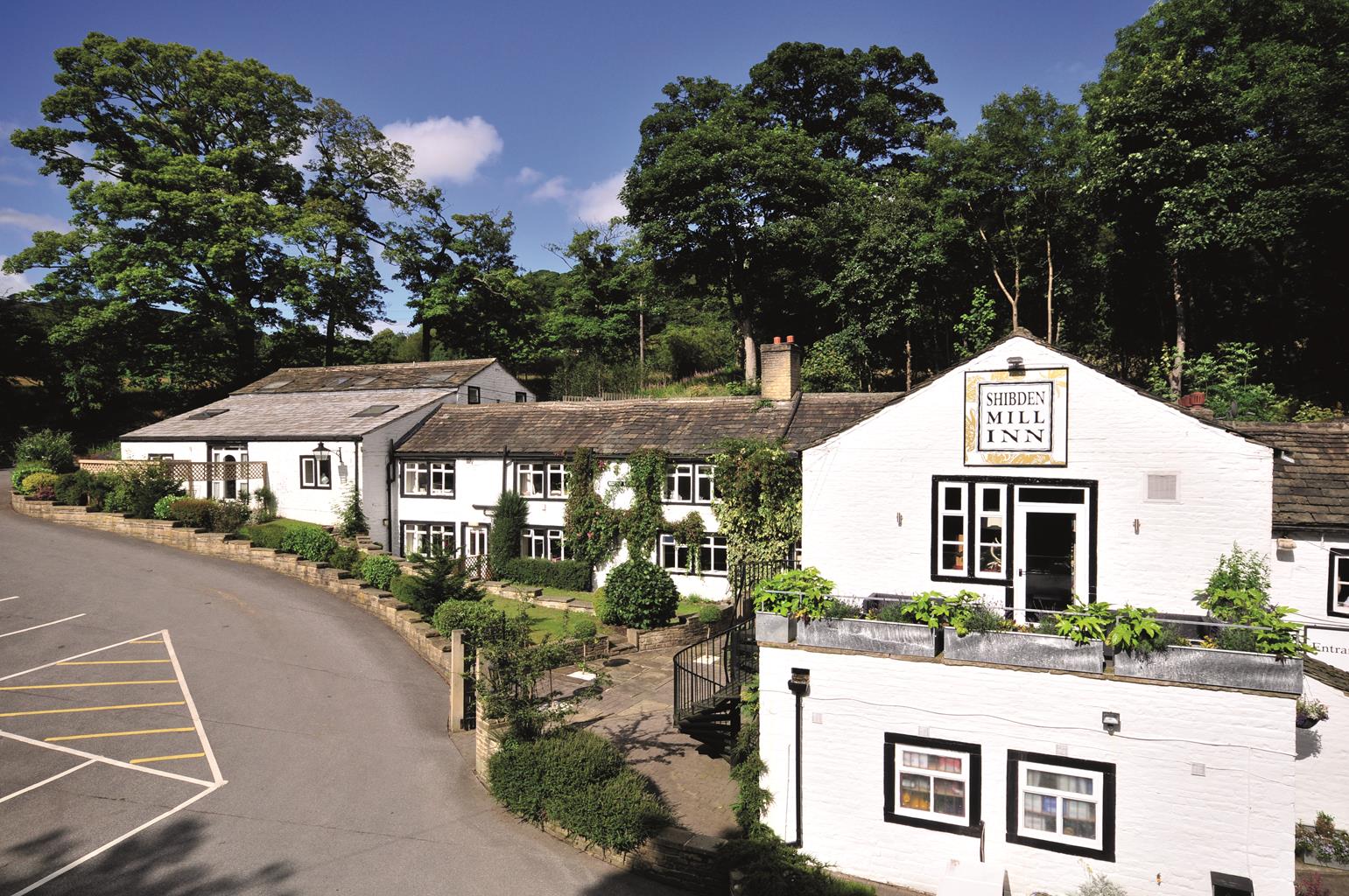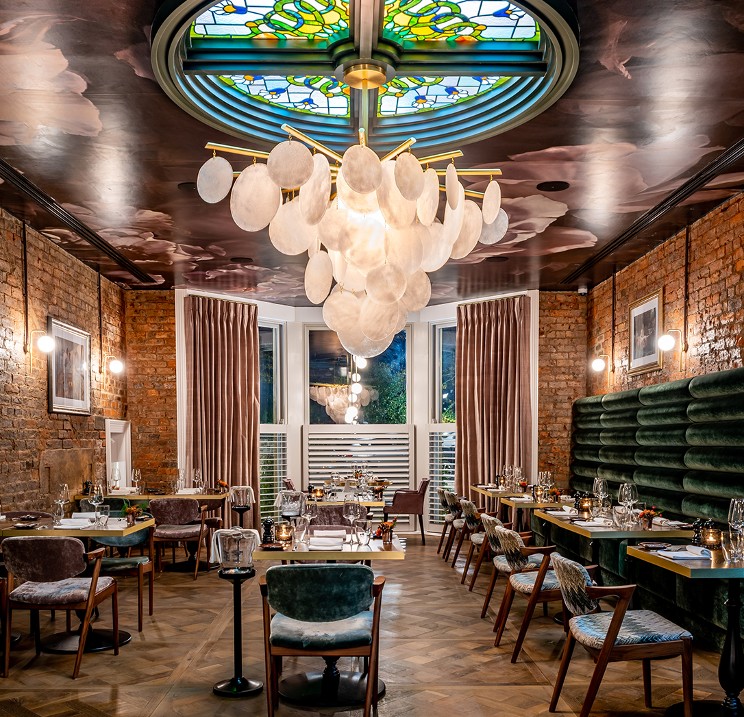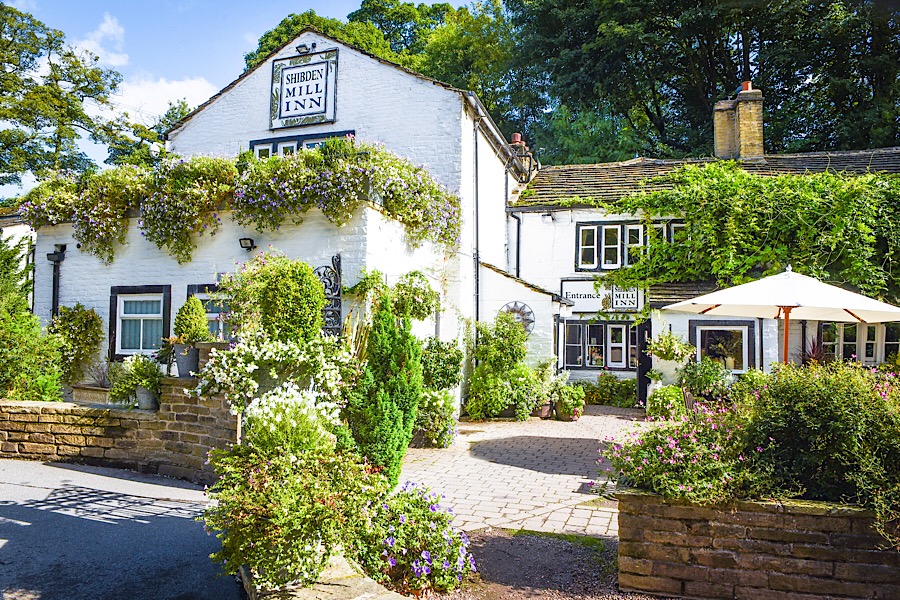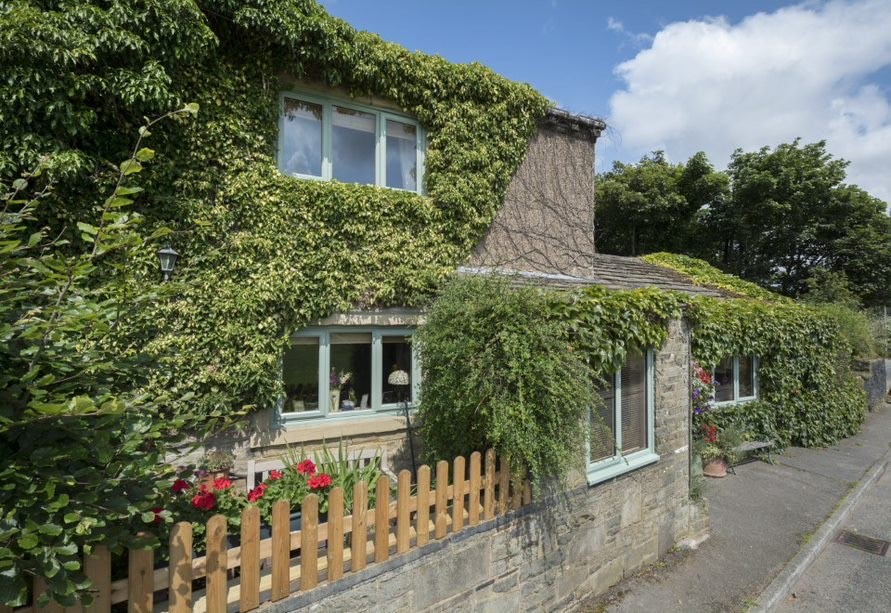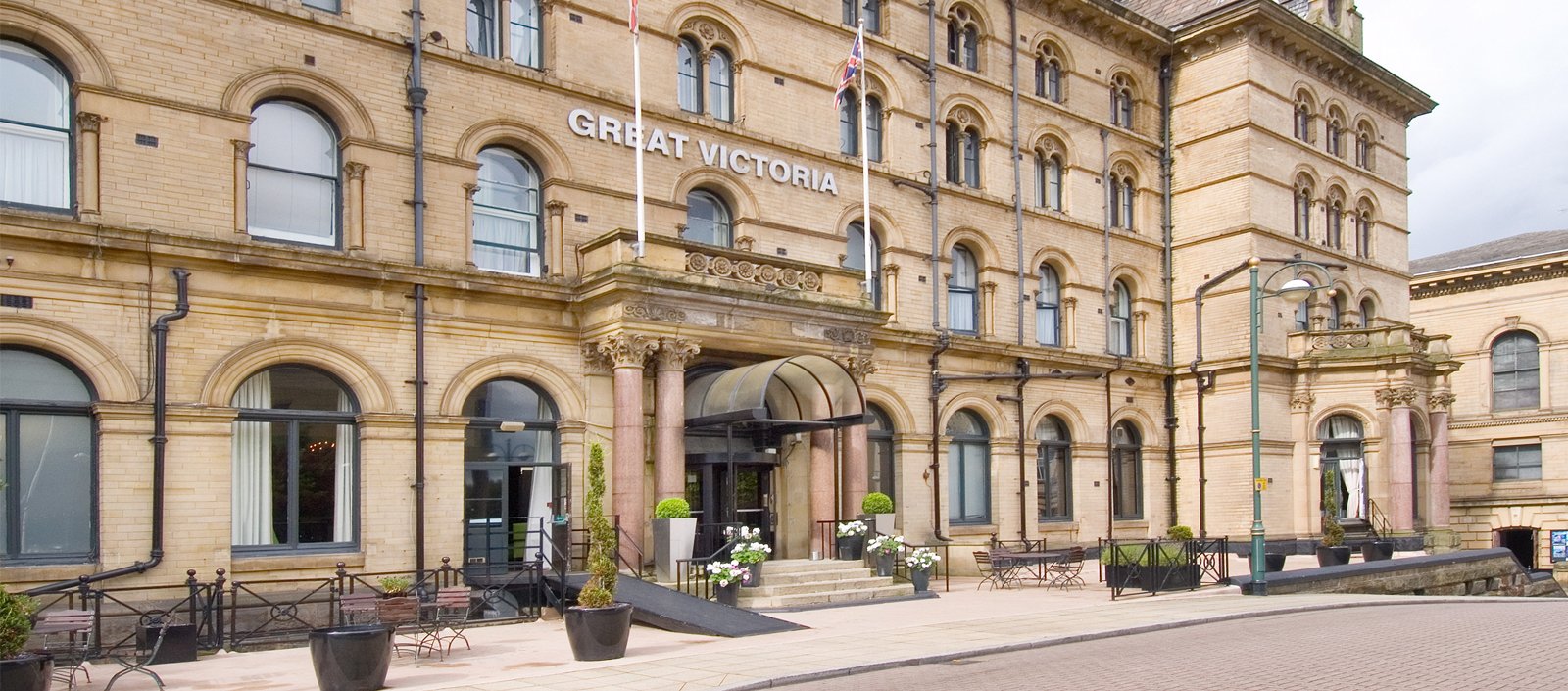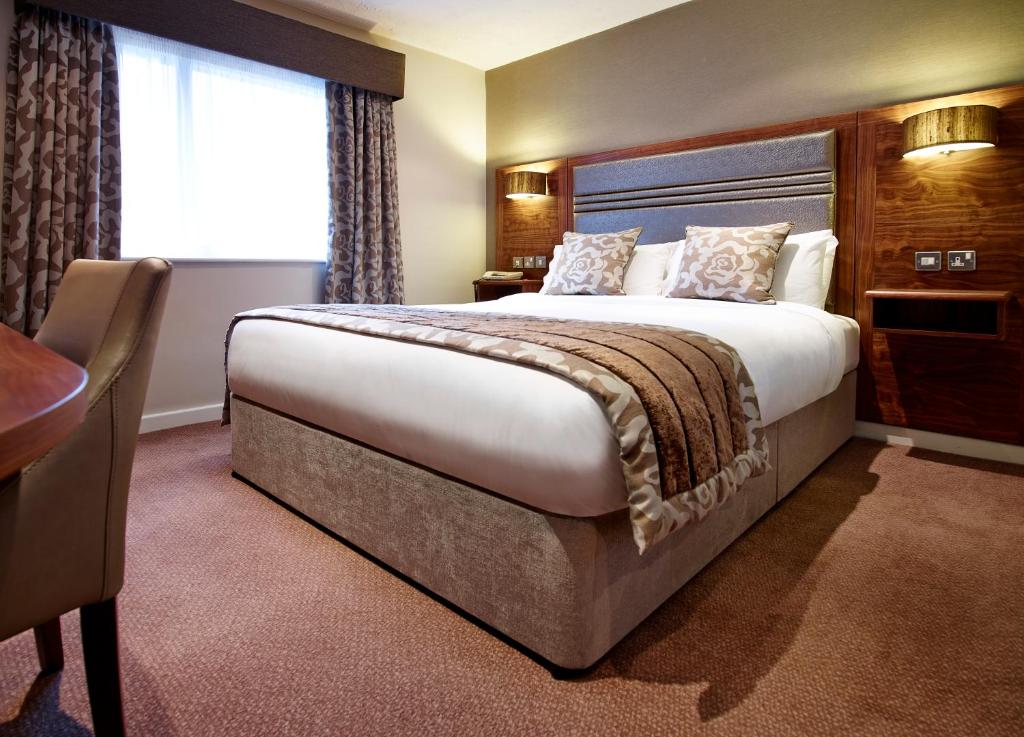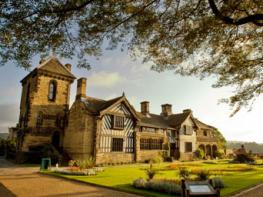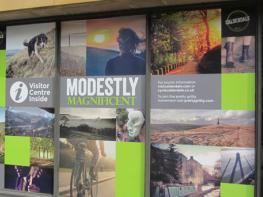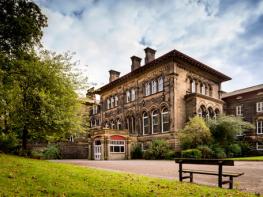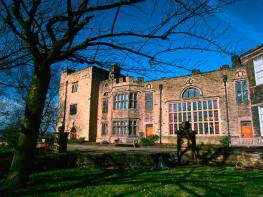Shibden Mill Inn is a 17th-century building tucked into the side of a country road in Shibden…
Halifax: the ancient halls of Coley
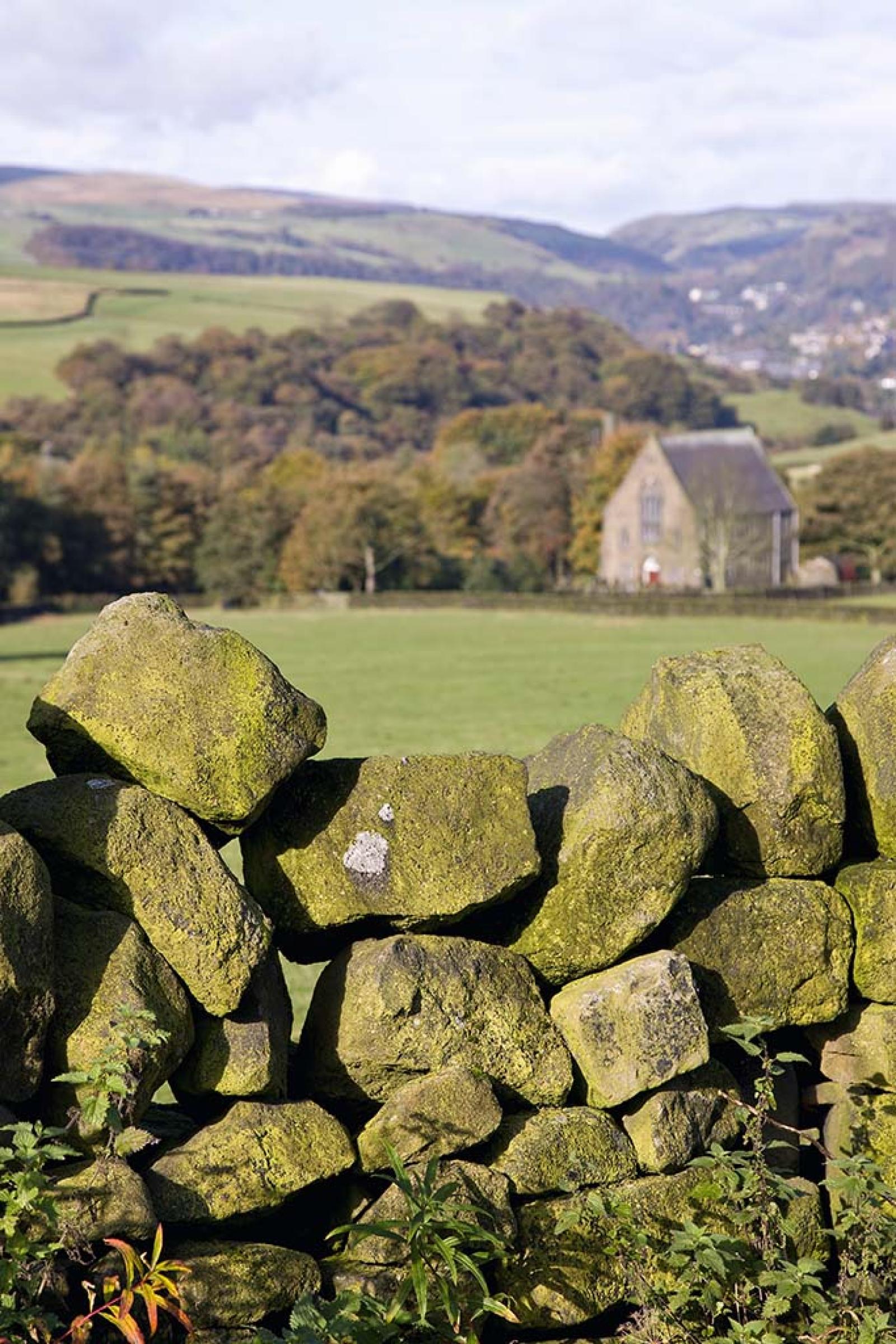
Tales of uncivil bombardments, champion archers and ghosts abound on this pastoral stroll
1.4 miles (2.3kms)
About the walk
Coley is a peaceful backwater on a hill high to the north-east of Halifax, its church tower visible for miles around from many directions. Surrounded by pastures (Coley is derived from ‘cold lea’ or ‘cold pasture’) and secretive wooded valleys which conceal exquisite waterfalls, it is popular with local walkers but remains little known further afield.
Ancient halls dot the area and this gentle walk visits two of them. Both are rumoured to have had secret tunnels between them and the chapel that once stood close to the site of the present Church of St John the Baptist.
Two ancient halls
Coley Hall has had a colourful history. Records for the site go back as far as 1277 when a medieval priory is thought to have occupied the site. Parts of the present building date back to 1572 though the bulk was built around 1640. Not long after, during the English Civil Wars, it was bombarded by passing Parliamentarian troops after its owner, Captain Langdale Sunderland, sided with the Royalists. The south frontage had to be rebuilt.
From 1662 to 1665, the hall was home to leading Nonconformist minister Oliver Heywood. Born in Bolton in 1630, he graduated from Trinity College Cambridge at the age of 20 and the same year became preacher at Coley. Heywood was unconventional, rejecting state interference in religious affairs: when the vicar of Halifax forbade baptisms in outlying chapels, Heywood carried on regardless. When the Uniformity Act of 1662 demanded adherence to the prayer book, Heywood set it aside and continued to preach, despite a suspension. He was excommunicated in 1662, barred from local churches, then fined for non-attendance. When the Five Mile Act of 1665 forbade excommunicated ministers from preaching within 5 miles (8km) of their former parish, Heyward seized the opportunity to spread the Nonconformist cause, travelling thousands of miles as an itinerant evangelist. Even then, he managed to sneak back to preach in his old chapel in 1668 ‘to a very great assembly’, during his successor’s absence, and founded a new chapel in nearby Northowram, less than a mile (1.6km) away. He spent his final years in Northowram, evangelising to the end, and died in 1702. His remains lie in his mother’s grave, in a side chapel in Halifax Minster.
Coley Hall was semi-derelict by the 1960s when it was bought by Richard Pickles, who set about restoring it. In doing so he seems to have awoken spirits from Heywood’s time. Royalist Cavaliers have been encountered in more than one room, while a white lady is said to haunt the main staircase.
Wynteredge Hall, also visited on this walk, is so-called because it sits on the edge of a hill and bears the brunt of chilling winter gusts. Parts of the building are believed to date back as far as 1371 though the main body was rebuilt in the 1640s. One of the outbuildings bears several inscriptions, including the Latin legend: ‘Garrulus insano crucietur mundus amore/Dum mea perlacide vita serena placet’ which translates as ‘Let mad chatterers agonise over senseless affections, While my own tranquil lifestyle pleases me’. John King, of nearby Hipperholme, who died in the hall in 1675, at the age of 73, was regarded as the best English archer of his day. As well as entertaining King Charles I with his skills, he is said to have won many wagers during the civil wars.
Walk directions
Take the lane to the left of the church. After 440yds (402m) this kinks right, around Coley Hall, then continues to a T-junction. Cross over and turn right, along Shutts Lane, for 300yds (274m).
Immediately before the junction with Syke Lane, re-cross and take a stile through a hedge, where a waymarker indicates that the field path ahead is part of the Brighouse Boundary Walk. Ascend the field ahead, passing beneath power lines, and cross a wooden stile through a wall ahead. Bear diagonally right across the subsequent field, aiming to meet the power line again in the top right corner.
Pass between old stone gateposts and climb to a metal gate, crossing the surfaced driveway beyond to continue, with Wynteredge Hall to your right, to a gap stile in the wall, to the right of the uppermost pair of trees.
Turn right through the stile to follow the wall, along the brow of Wynteredge Hill. This ridge offers great views across what is known locally as Chelsea Valley, to the villages of Northowram and Southowram. On clear days, Crow Hill in the Calder Valley, and Manshead Hill above Cragg Vale are visible, and you might even glimpse Almondbury Hill and Victoria Tower above Huddersfield, as well as the high moors of the Peak District even further away.
The ridge path ends at a stone step stile beyond which you should continue ahead for 160yds (146m), back to the church.
Additional information
Good tracks, quiet country lanes and field paths; several stiles
Pastoral countryside
Dogs should be under control throughout and on lead on farmland
OS Explorer 288 Bradford & Huddersfield
On-street parking outside St John’s Church, Coley. Park considerately, especially when services are being held
None on route
WALKING IN SAFETY
Read our tips to look after yourself and the environment when following this walk.
Find out more
Also in the area
About the area
Discover
Nearby stays
Restaurants and Pubs
Nearby experiences
Recommended things to do
Why choose Rated Trips?
Your trusted guide to rated places across the UK
The best coverage
Discover more than 15,000 professionally rated places to stay, eat and visit from across the UK and Ireland.
Quality assured
Choose a place to stay safe in the knowledge that it has been expertly assessed by trained assessors.
Plan your next trip
Search by location or the type of place you're visiting to find your next ideal holiday experience.
Travel inspiration
Read our articles, city guides and recommended things to do for inspiration. We're here to help you explore the UK.

